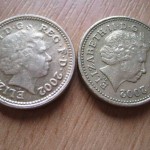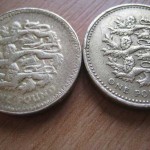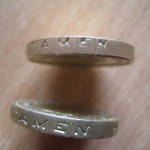Spotting a Fake Pound Coin
Supposedly 2% of all pound coins are counterfeit. But how do you know when you have a fake? I heard the news item and had a quick look at the pound coins in my pocket, and couldn’t see anything. I thought that maybe it wasn’t all that easy to spot. But then I saw one my Mum had:



There are a few noticeable differences:
- The lettering and images are faded
- The images have less fine detail
- They may not pass the “spin test” (although mine did) — the obverse image is not in the same orientation as the reverse image
- The lettering on the side is incomplete or off-centre
- The side inscription and obverse or reverse image may not match the supposed year of print (although, again, this one did)
- The material of the coin may feel different — this one felt less dense than the real one; gold paint may also flake off
- A vending machine will probably not accept it
There are other things that you can do beyond just looking at it, such as weighing it on some very accurate scales, or testing the resistivity.
One thing that doesn’t prove it’s fake, however, is the orientation of the lettering on the side. All my pound coins (except the fake) have the obverse facing upwards when reading the lettering, but I’ve seen other coins where it’s the other way around. There’s a three-part post over at Blogalism that goes into more detail, and in one of the comments explains that the coins fall from the face-stamping machine into the edge-inscription machine, giving it a 50% chance of appearing either way up.
Leave a Reply